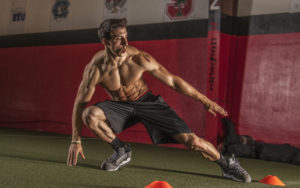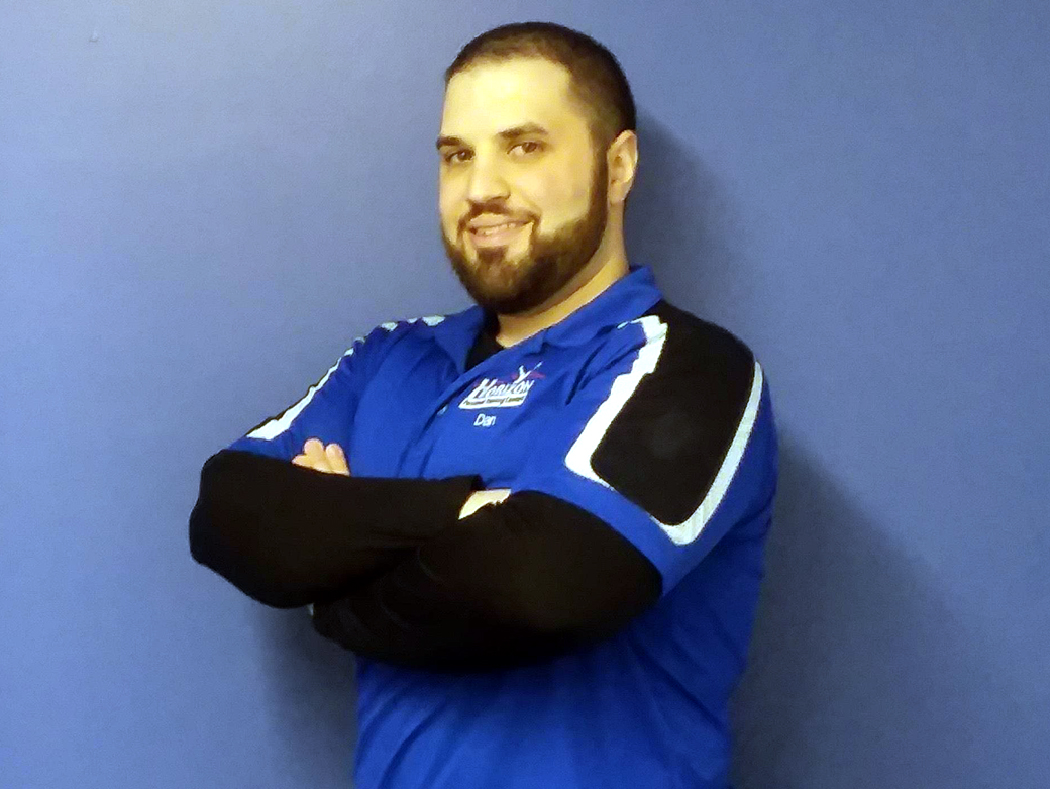Change of Direction; Skills of an Athlete
By Daniel F.
When training athletes, one of the most important skills to teach—and for athletes, to learn– is change of direction. With the exception of track and field events, the majority of sports requires the ability and agility to change direction. Not only is changing direction a requirement, but also being capable of changing direction quickly and safely, is crucial.
Most joint-related injuries occur with direct contact (i.e., getting hit), or during a sudden and rapid change of direction. The force placed on the joint when an athlete must suddenly stop, rotate, and reaccelerate will impose a lot of tension on the tendons and can often lead to injuries. With these injury risks so high, the best thing an athlete can do is to learn how to change direction safely and correctly.
The first part of changing direction properly is the ability to stop. Stopping is the point where a lot of injuries will occur. When an athlete is moving at a high rate of speed and then stops suddenl, there is momentum and force placed on the joints that can wreak havoc. To understand this force a little better, think of a car.
When a car is moving at a high rate of speed and the driver slams on the brakes, the car does not stop immediately. It will continue skidding for many feet, or even yards, due to the momentum that will carry the car forward. That same type of force is applied to the joints when an athlete tries to stop suddenly. The reason this is important to understand is because in order to change direction, the athlete needs to first stop, redirect the energy, and then move in a new direction.
The cue I use when training an athlete on stopping before changing direction is: to stop, the athlete should lean in the direction they are going to go, and they should lean away from the stop, i.e., they are going to plant the outside foot and lean the opposite way they were originally traveling. If the athlete were to plant the foot, but let momentum keep carrying the body, it would put undue stress on the knee. I teach maintaining a positive shin angle. When stopping, the knee should stay on the inside of the outside foot.
Once learning how to stop properly has been established, the next step is learning to take the built-up momentum and divert it into a new direction. When an athlete knows how to stop, I then prefer to teach them a crossover to change direction. The crossover, when done properly, is going to be the most efficient and effective way to change an athlete’s direction. It should be widely understood that the athlete who stops and restarts first will always be the faster athlete. The crossover is a great tool because it will allow the athlete to clear more actual feet and yardage in their first step than by just simply pivoting. Additionally, when doing a crossover properly (that is, slapping the back shoulder with the front arm, stepping across the body hard with the back leg to pivot, and then punching the back arm forward to take the first step in the new direction) it will put the athlete in alignment for perfect running form.
I use many progressions of drills to reinforce these skills. I always start with teaching the mechanics first, really setting a baseline with no added load. Once we can establish proper form with the athlete, we can begin using resistance with a band, and doing more dynamic drills with cones, hurdles, ladders, etc. When an athlete has mastered these dynamic and resisted drills, I can progress them to plyometrically-reinforced change of direction. This means adding an explosive change of direction that usually involves some kind of jump and advanced explosive load. It is important to make sure the athlete has mastered each of the previous steps before progressing to the next, but once an athlete has honed the skill of change of direction, they will be a force to be reckoned with on the field!
Dan’s journey into fitness began as an overweight youth. Being extremely overweight he took steps to change his life starting with proper nutrition and a little bit of exercise. He attended Clemson University receiving a BS in Management. He spent most of his free time in the rec. center getting hooked on exercise. Upon graduating he moved back to CT and decided to learn everything he could about the fitness industry and how to properly train the human body. He attended The National Personal Training Institute receiving a diploma in personal training and nutrition consultation. After NPTI he participated in a 4 month mentorship to learn the intricacies of training athletes. This is where he found his passion! He has spent the last 4 years training athletes, of all ages. He has extensive experience training athletes from middle-school all the way to the pros, in all sports! He is a certified strength and conditioning specialist, CSCS, through the National Strength and Conditioning Association. He is also has an Advanced Certified Personal Trainer (A-CPT) certification, and is currently working on his Tactical Strength and Conditioning Facilitator certification.






